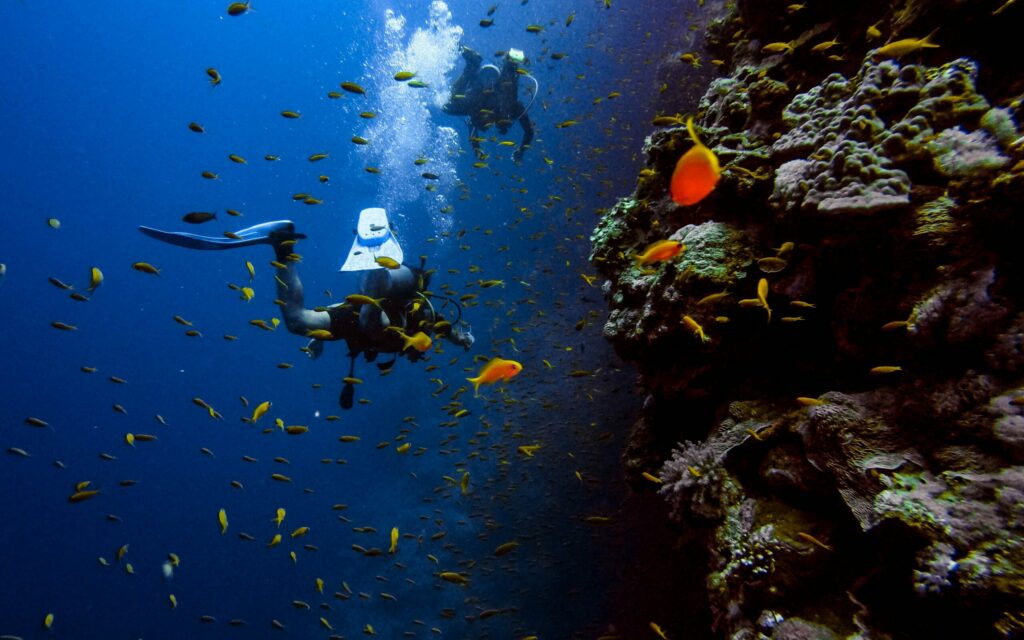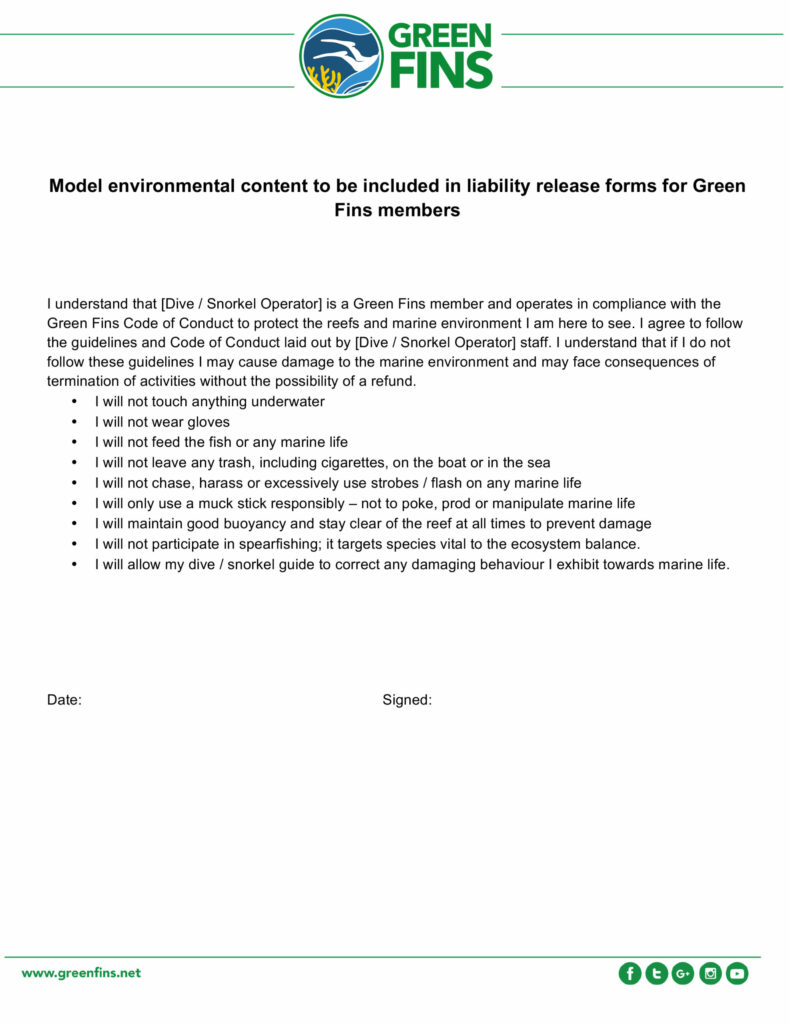Pre-dive Briefings
As you know already, a pre-dive briefing provides important information such as safety, the dive plan and what divers might see on the dive itself. However, it is also important to include environmental aspects to this.

Top Tip
To engage your divers, integrate environmental messages within the rest of the briefing rather than adding them at the end. If you are not used to this, practice first on your own or with a friend so it becomes more natural!
Here is a video outlining why it is important to give an environmental briefing:
Key points to include:
The Green Fins Icons lists some environmental elements to consider when working as a dive guide and the reasons why divers are asked to do them. Note that you don’t have to overload your guests in every briefing, but include a few of these important environmental points in your briefings each time.
For your briefing, make sure you pick 3-5 of the most relevant environmental elements according to location, dive conditions and your guests’ ability and habits.
Top Tip
Consider the use of a release form (pictured below) to make sure your divers are aware of environmentally friendly guidelines and are more likely to follow them.

